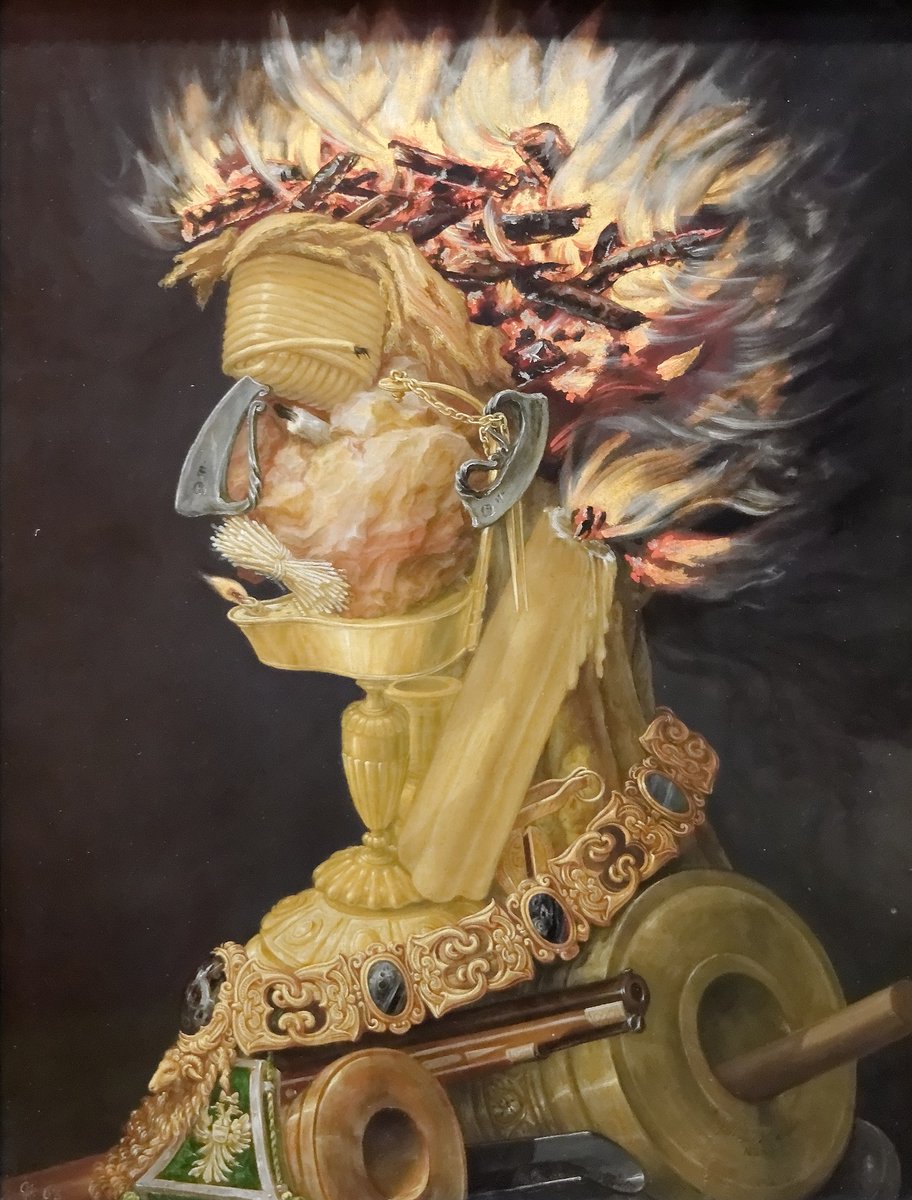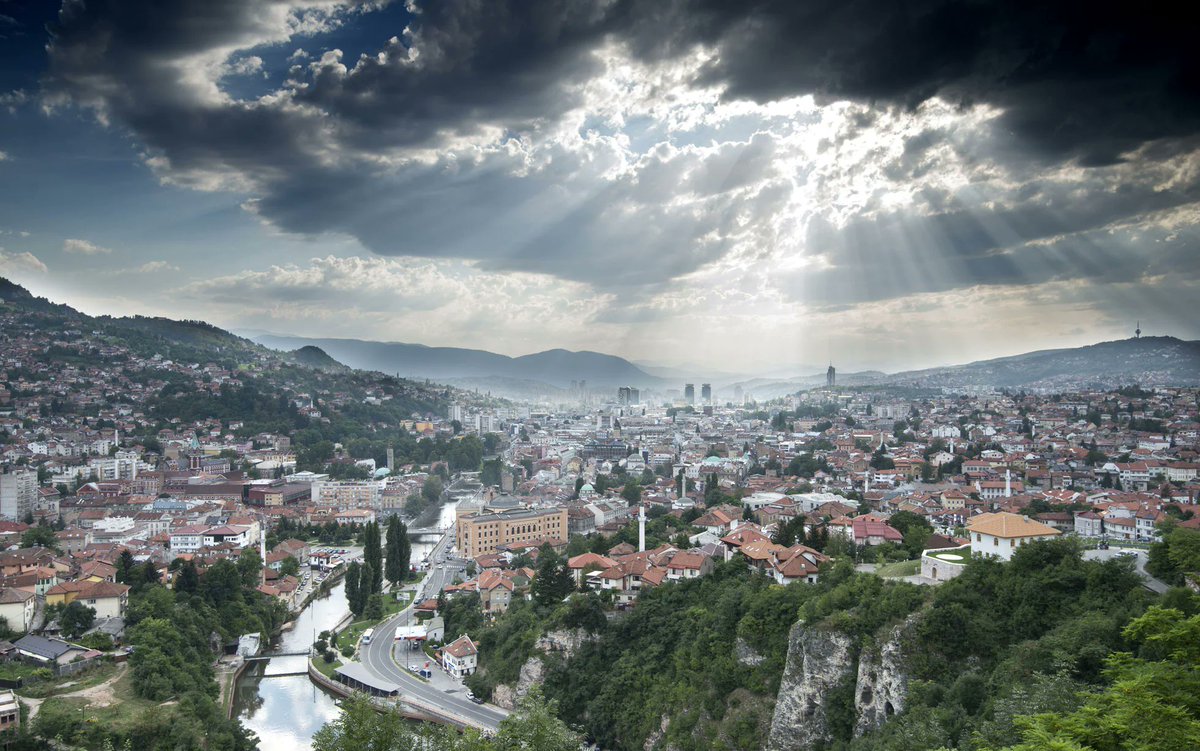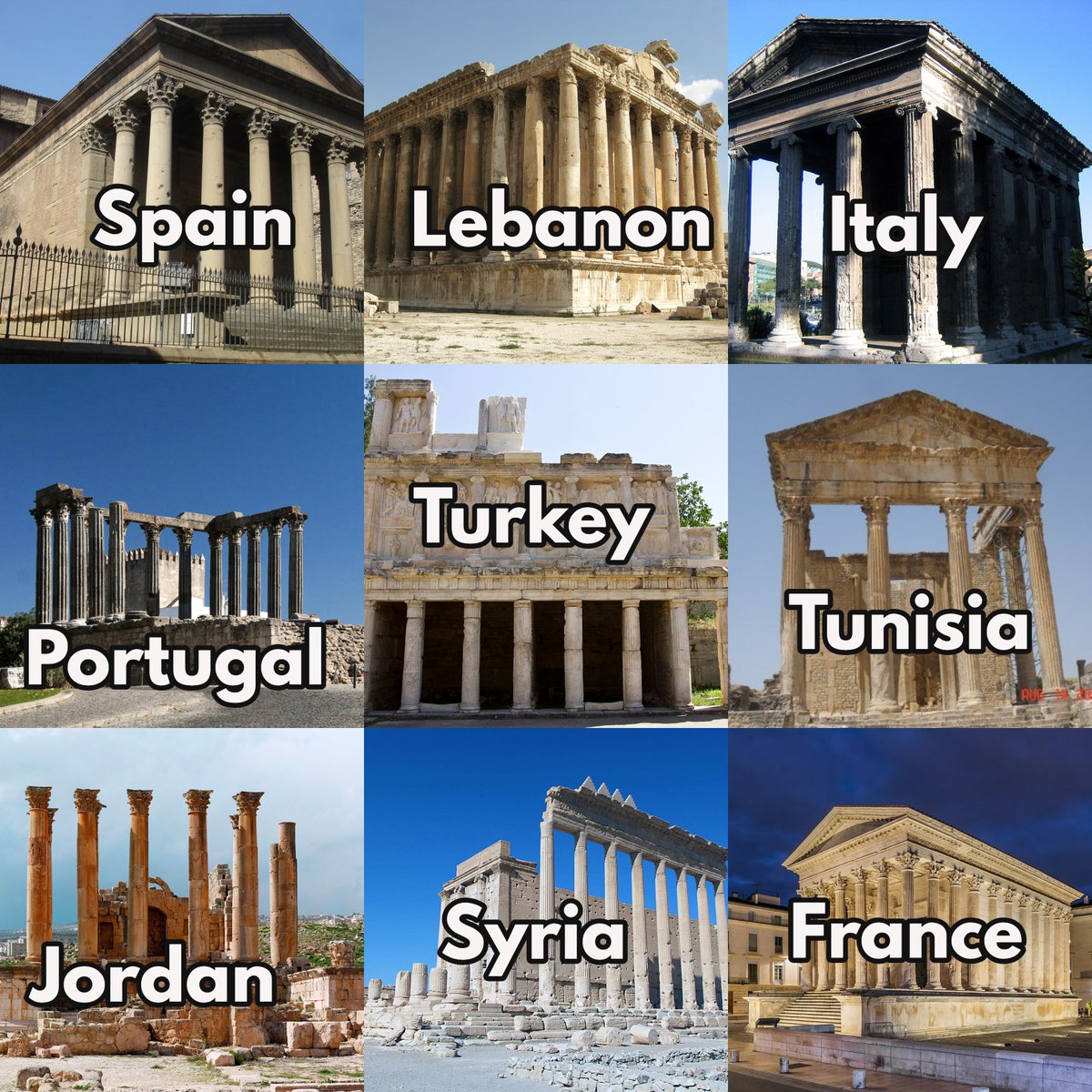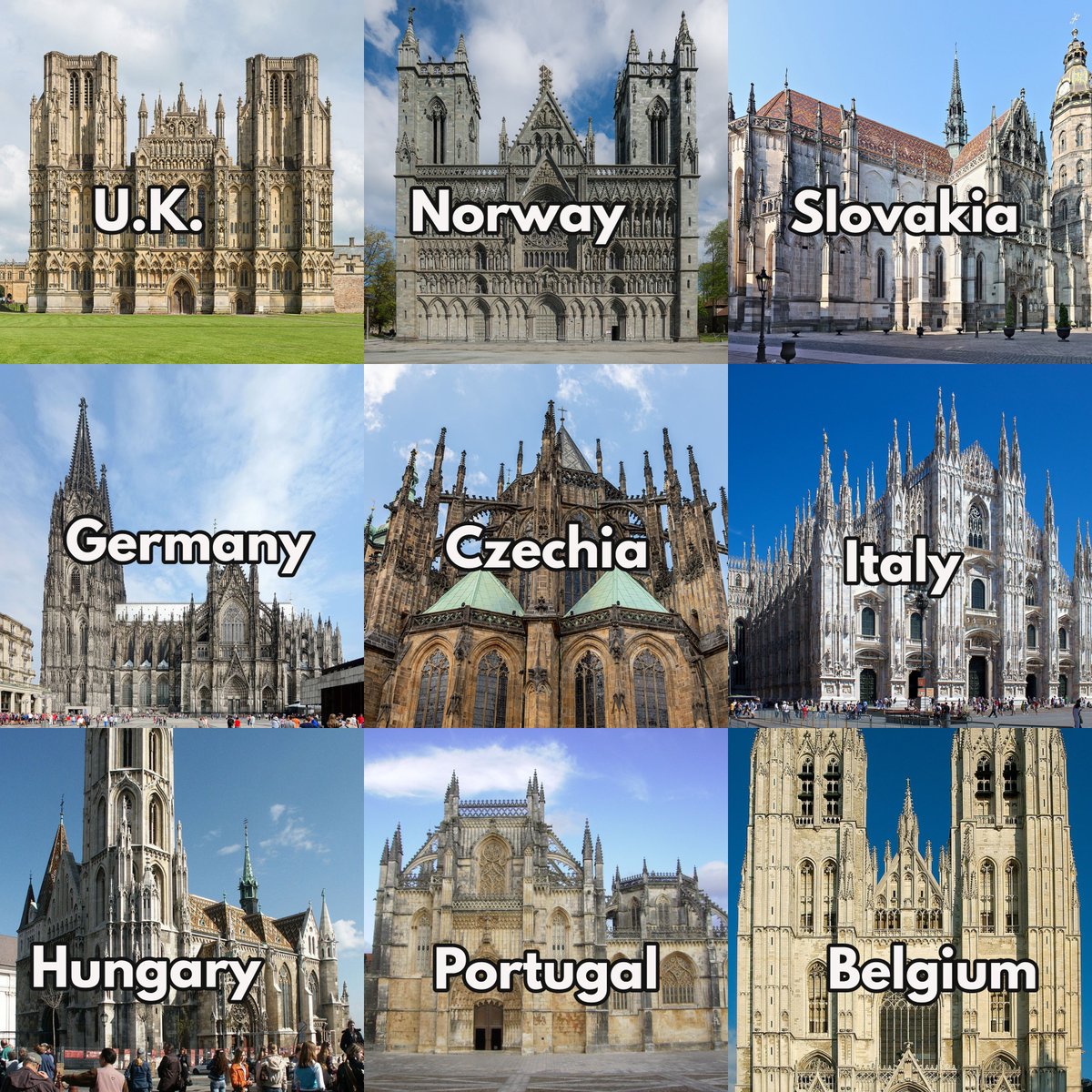
This image was not generated by AI.
It's a 450 year old painting called The Librarian, by the wildly inventive artist Giuseppe Arcimboldo.
And his other paintings only get stranger...
It's a 450 year old painting called The Librarian, by the wildly inventive artist Giuseppe Arcimboldo.
And his other paintings only get stranger...

Giuseppe Arcimboldo (1526-1593) was born in Milan and worked in the court of three different Holy Roman Emperors, in Prague and Vienna.
His career coincided with the Late Renaissance, when Mannerism had become the dominant artistic style.
His career coincided with the Late Renaissance, when Mannerism had become the dominant artistic style.

Mannerism was a movement which reacted to rather than rejected the principles of the High Renaissance.
For painters like Leonardo and Raphael and Michelangelo had seemingly perfected art. In their shadow, what more could be achieved?
For painters like Leonardo and Raphael and Michelangelo had seemingly perfected art. In their shadow, what more could be achieved?

Well, their work had been graceful and composed, full of harmony and a splendid simplicity; their colours were mellow and their scenes were elegant.
The Mannerists, beginning in the 1520s, started introducing more drama, emotion, colour, and vibrancy into their art.
The Mannerists, beginning in the 1520s, started introducing more drama, emotion, colour, and vibrancy into their art.

This applied to sculpture as well. Compare something like Michelangelo's famous David (1504), with its cool repose, to the high drama of Giambologna's Abduction of a Sabine Women (1583), with its contorted poses: 



In some sense they became experimental, pushing far beyond what Leonardo & co did.
One of Mannerism's defining traits is a subtle lengthening of the human limbs, the idea being to create a superhuman elegance.
As most famously in Parmigianino's Madonna, from 1540:
One of Mannerism's defining traits is a subtle lengthening of the human limbs, the idea being to create a superhuman elegance.
As most famously in Parmigianino's Madonna, from 1540:

And so that was the broad artistic context in which Arcimboldo worked.
That being said, his role as a court painter came first. Arcimboldo made plenty of "normal" paintings. Like this portrait of Emperor Maximilian II and his family, from 1563:
That being said, his role as a court painter came first. Arcimboldo made plenty of "normal" paintings. Like this portrait of Emperor Maximilian II and his family, from 1563:

But it was for his satirical portraits in which he constructed human faces from objects that Arcimboldo became popular.
They were almost certainly made as a form of frivolous entertainment for the Imperial Court.
You can imagine the laughter and intrigue when this was revealed:
They were almost certainly made as a form of frivolous entertainment for the Imperial Court.
You can imagine the laughter and intrigue when this was revealed:

Which can be turned upside down to look like a normal basket of fruit!
Though, within the broader context of Mannerism, it perhaps makes sense that such wildly inventive, playful, and experimental art had an audience.
Though, within the broader context of Mannerism, it perhaps makes sense that such wildly inventive, playful, and experimental art had an audience.

Indeed, Arcimboldo even painted a portrait of the Holy Roman Emperor Rudolf II, in which his face was made of.... vegetables.
That may sound like something which might get a man killed. But Arcimboldo was everybody's favourite entertainer, it seems.
That may sound like something which might get a man killed. But Arcimboldo was everybody's favourite entertainer, it seems.

Sometimes he would pick out a particular profession and make a mockery of them; Arcimboldo was as much a satirist as an entertainer.
Like this, the Jurist.
His use of plucked poultry for the face is rather revolting, but that's the point. Arcimboldo is parodying lawyers.
Like this, the Jurist.
His use of plucked poultry for the face is rather revolting, but that's the point. Arcimboldo is parodying lawyers.

Arcimboldo also did several series based around a theme.
Such as the four seasons. There has been speculation about how serious these paintings are. Were they merely entertainment, or were they related to deeper cultural trends?



Such as the four seasons. There has been speculation about how serious these paintings are. Were they merely entertainment, or were they related to deeper cultural trends?




Arcimboldo also did a series on the four elements; this one is Fire.
It's hard not to speculate, looking at this, that Arcimboldo's portraits speak to a sort of proto-scientific cultural interest, what with his deconstruction of the world into its constituent parts.
It's hard not to speculate, looking at this, that Arcimboldo's portraits speak to a sort of proto-scientific cultural interest, what with his deconstruction of the world into its constituent parts.

Though, looking at Water, it's equally tempting to believe that Arcimboldo was simply creating objects of fascination, art intended to delight and intrigue, to explore the bizarre and the dream-like, to experiment and provoke, to humour and to mock. 

This is Earth.
Arcimboldo was clearly a talented draughtsman, for his detailing, his perspective, forms, and colours are all of the highest quality.
What made him paint such strange things? Perhaps he was a little mad.
Arcimboldo was clearly a talented draughtsman, for his detailing, his perspective, forms, and colours are all of the highest quality.
What made him paint such strange things? Perhaps he was a little mad.

This is Air.
Or perhaps Arcimboldo knew exactly what he was doing. A highly skilled artist, a brilliant entertainer, and somebody well-aware of the trends of his day.
Did he get sick of producing these portraits, or did he delight in giving his audience what they wanted?
Or perhaps Arcimboldo knew exactly what he was doing. A highly skilled artist, a brilliant entertainer, and somebody well-aware of the trends of his day.
Did he get sick of producing these portraits, or did he delight in giving his audience what they wanted?

His work ranges from the grotesque to the delightful, walking a fine line between satire and simple folly.
Those members of the Holy Roman Court were lucky indeed. No doubt Arcimboldo gave them cause for as much laughter as discussion.
This one is the Cook:
Those members of the Holy Roman Court were lucky indeed. No doubt Arcimboldo gave them cause for as much laughter as discussion.
This one is the Cook:

Arcimboldo's paintings are bafflingly brilliant, and as captivating (& hilarious) now as they were nearly 500 years ago.
How serious are they? We'll never know.
But his work is an important reminder that our ancestors were no less inventive or playful than we are now.
How serious are they? We'll never know.
But his work is an important reminder that our ancestors were no less inventive or playful than we are now.

• • •
Missing some Tweet in this thread? You can try to
force a refresh




















